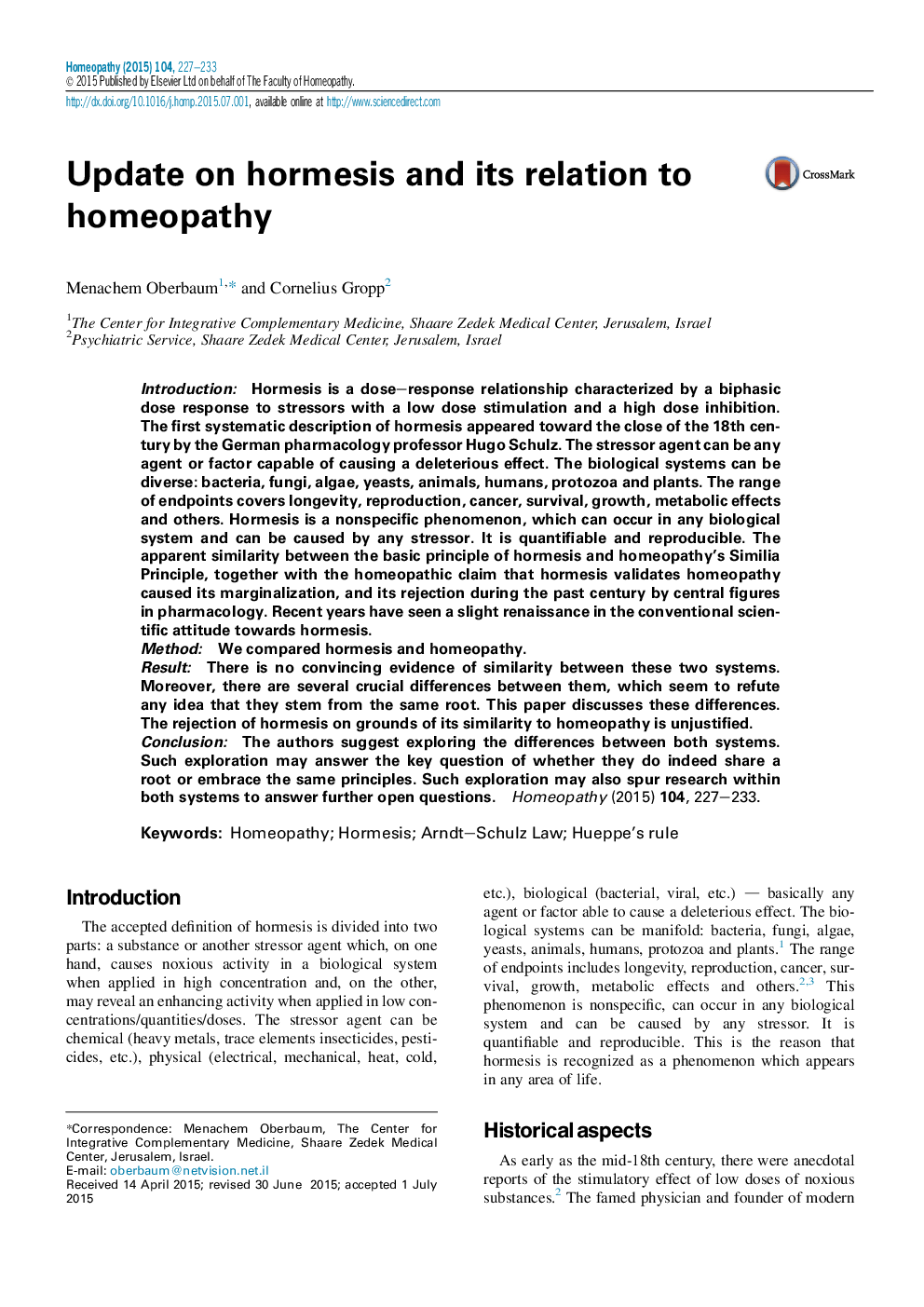| Article ID | Journal | Published Year | Pages | File Type |
|---|---|---|---|---|
| 2629799 | Homeopathy | 2015 | 7 Pages |
•Hormesis is a dose response relationship that is generally characterized as a biphasic dose response.•Hormesis was first identified by Hugo Schulz at the end of the 19th century.•The similarity between homeopathy and hormesis is regarded as the main cause for a long period of marginalization of hormesis.•Renewed interest in hormesis had been seen in recent years.•As for now a common root for homeopathy and hormesis could not be established.
IntroductionHormesis is a dose–response relationship characterized by a biphasic dose response to stressors with a low dose stimulation and a high dose inhibition. The first systematic description of hormesis appeared toward the close of the 18th century by the German pharmacology professor Hugo Schulz. The stressor agent can be any agent or factor capable of causing a deleterious effect. The biological systems can be diverse: bacteria, fungi, algae, yeasts, animals, humans, protozoa and plants. The range of endpoints covers longevity, reproduction, cancer, survival, growth, metabolic effects and others. Hormesis is a nonspecific phenomenon, which can occur in any biological system and can be caused by any stressor. It is quantifiable and reproducible. The apparent similarity between the basic principle of hormesis and homeopathy's Similia Principle, together with the homeopathic claim that hormesis validates homeopathy caused its marginalization, and its rejection during the past century by central figures in pharmacology. Recent years have seen a slight renaissance in the conventional scientific attitude towards hormesis.MethodWe compared hormesis and homeopathy.ResultThere is no convincing evidence of similarity between these two systems. Moreover, there are several crucial differences between them, which seem to refute any idea that they stem from the same root. This paper discusses these differences. The rejection of hormesis on grounds of its similarity to homeopathy is unjustified.ConclusionThe authors suggest exploring the differences between both systems. Such exploration may answer the key question of whether they do indeed share a root or embrace the same principles. Such exploration may also spur research within both systems to answer further open questions.
